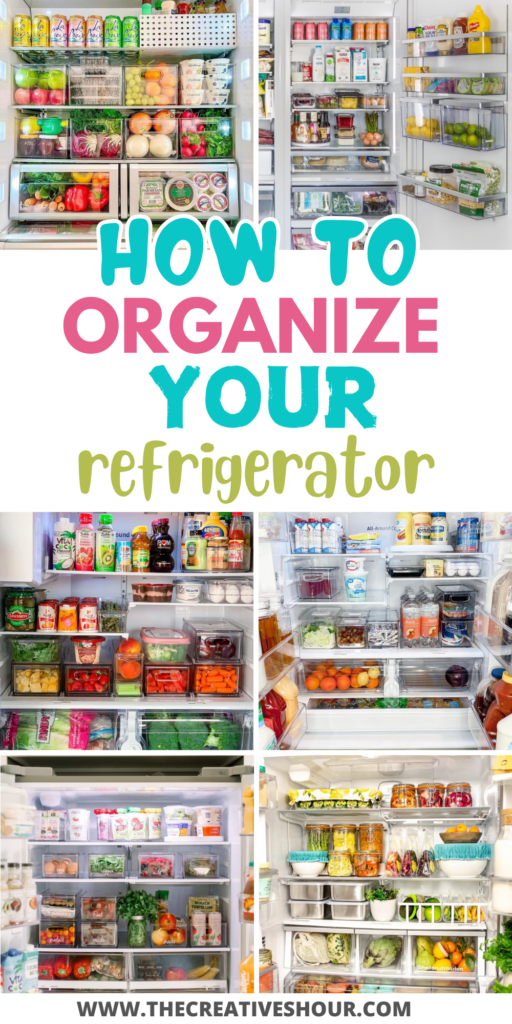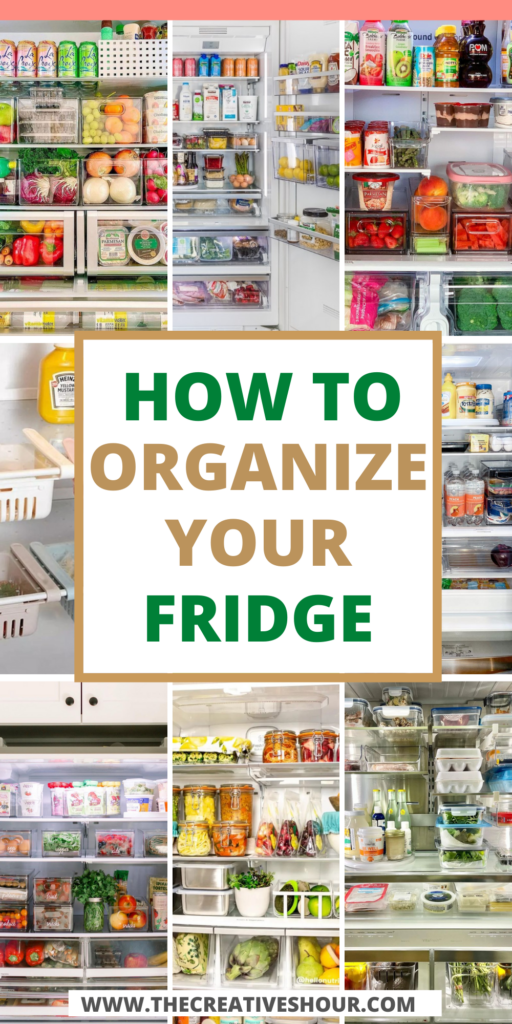
Your fridge is the heart of your kitchen, constantly in use and filled with everything from fresh groceries to leftovers. But over time, it can easily become a chaotic jumble of forgotten items, expired food, and containers shoved into every available space. Sound familiar? Don’t worry—you’re not alone!
Keeping your fridge organized can feel like a never-ending battle, but with the right approach, it’s easier than you think. In this article, we’ll guide you through simple, effective tips to declutter and organize your fridge, making it easier to find what you need and reducing food waste along the way.
Ready to organize a fridge into a clean and efficient space? Let’s dive in!
How To Organize Your Fridge
1. Start Fresh with a Deep Clean
Before refrigerator organization, empty your fridge and refrigerator door completely and give it a thorough clean with baking soda. This includes removing all drawers and shelves to clean any spills or stains that can lead to unpleasant odors or bacterial growth.
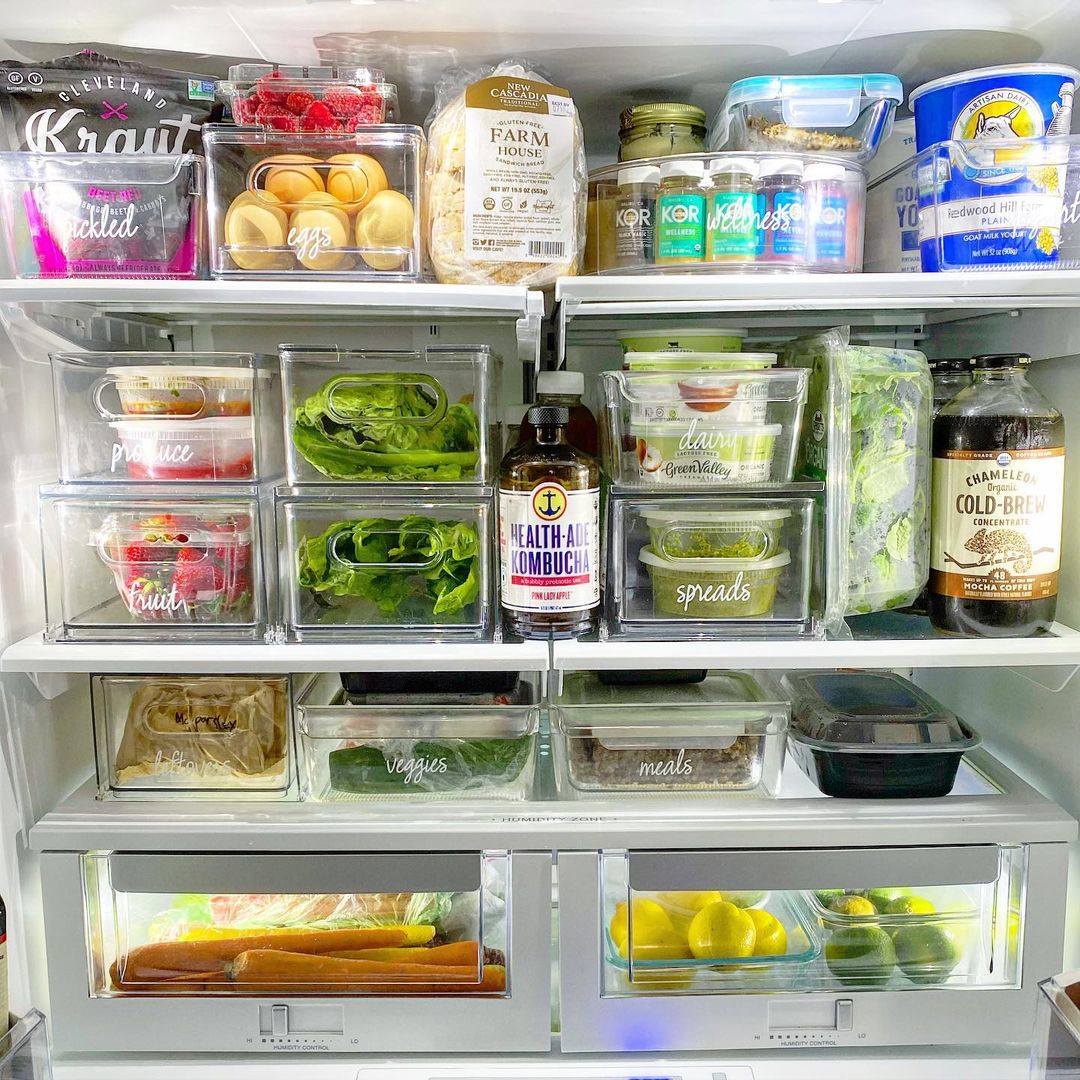 Image by dianesanfilippo
Image by dianesanfilippo
Amber Lewis highlights: “Starting with a clean slate is key to fridge organization. Empty it out, clean the shelves, and assess what you have to ensure you’re not storing unnecessary clutter.” — Amber Lewis, Amber Interiors Blog
2. Assign Zones for Efficiency
Organize your fridge into specific zones by food type: dairy on upper shelves, store fruits and veggies in the crisper, and meats on the bottom shelf. This reduces the risk of cross-contamination and helps you locate items more quickly.
Shea McGee explains: “Organizing your fridge into zones makes it easy to grab what you need without a chaotic rummage. Assign shelves and drawers based on the type of food—dairy, produce, and leftovers each get their own spot.” — Shea McGee, Studio McGee Blog
3. Adjust Shelves for Better Storage
Customize your fridge’s layout by adjusting the height of shelves to better fit your groceries. Shelves should accommodate the size of your containers and ensure easy access to frequently used items.
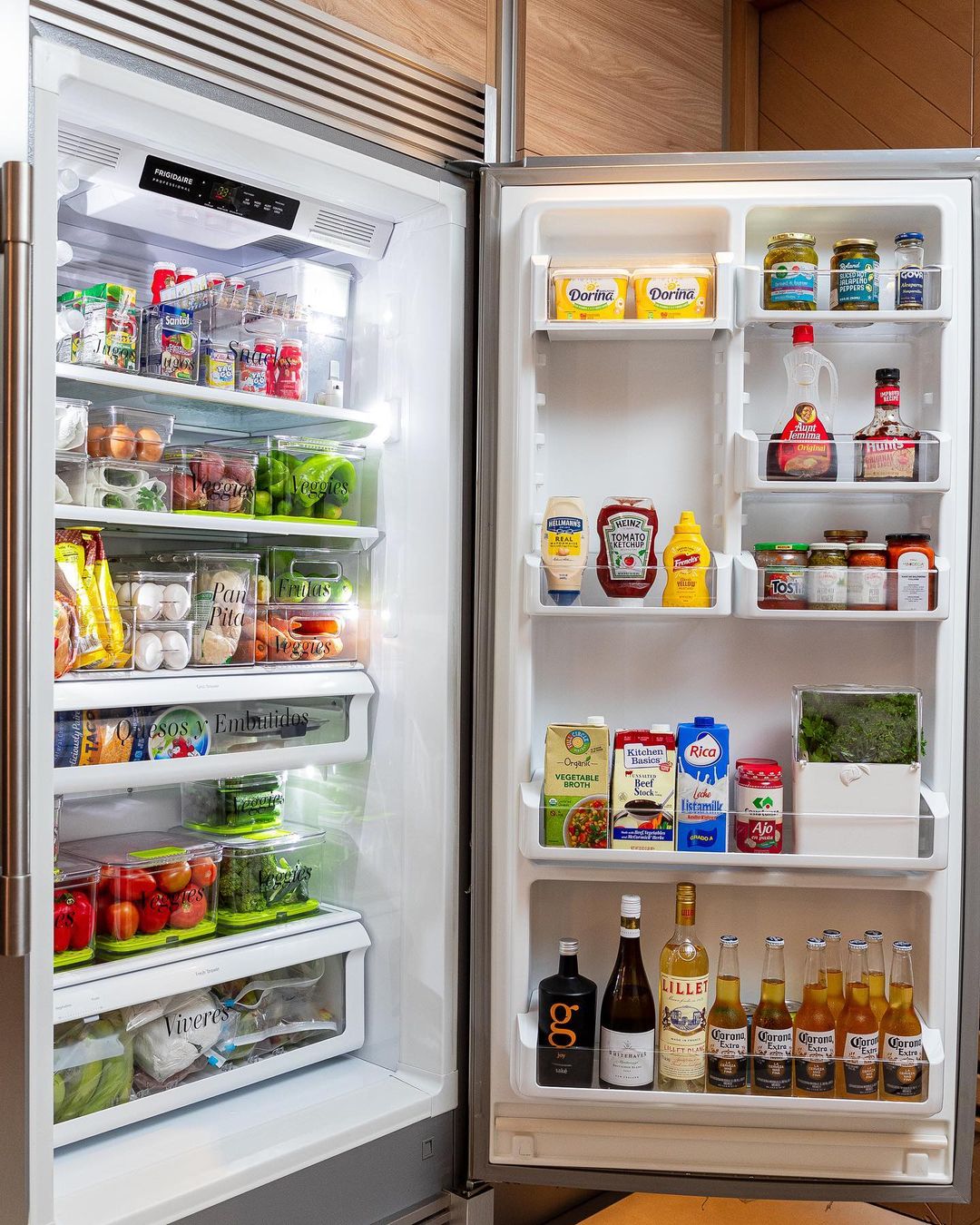 Image by thehostessplace
Image by thehostessplace
Sarah Sherman Samuel adds: “Fridges aren’t one-size-fits-all when it comes to food storage. Adjust your shelves to fit your groceries and make sure to leave room for taller items like milk or juice.” — Sarah Sherman Samuel, Sarah Sherman Samuel Blog
4. Use Clear Storage Bins to Maximize Space
Group similar items, such as snacks, fruits, or dairy products, in clear bins to make everything easy to find. Clear containers also help you track inventory at a glance, reducing the risk of food spoilage.
Bobby Berk notes: “Clear storage bins are a lifesaver for fridge organization. They make everything visible and easily accessible, preventing items from getting lost at the back.” — Bobby Berk, Bobby Berk Blog
5. Label Everything for Consistency
Labeling bins and shelves in your fridge is a way to organize. It provides structure and ensures consistency in your organization. It also helps the whole family follow the system, keeping your fridge tidy over time.
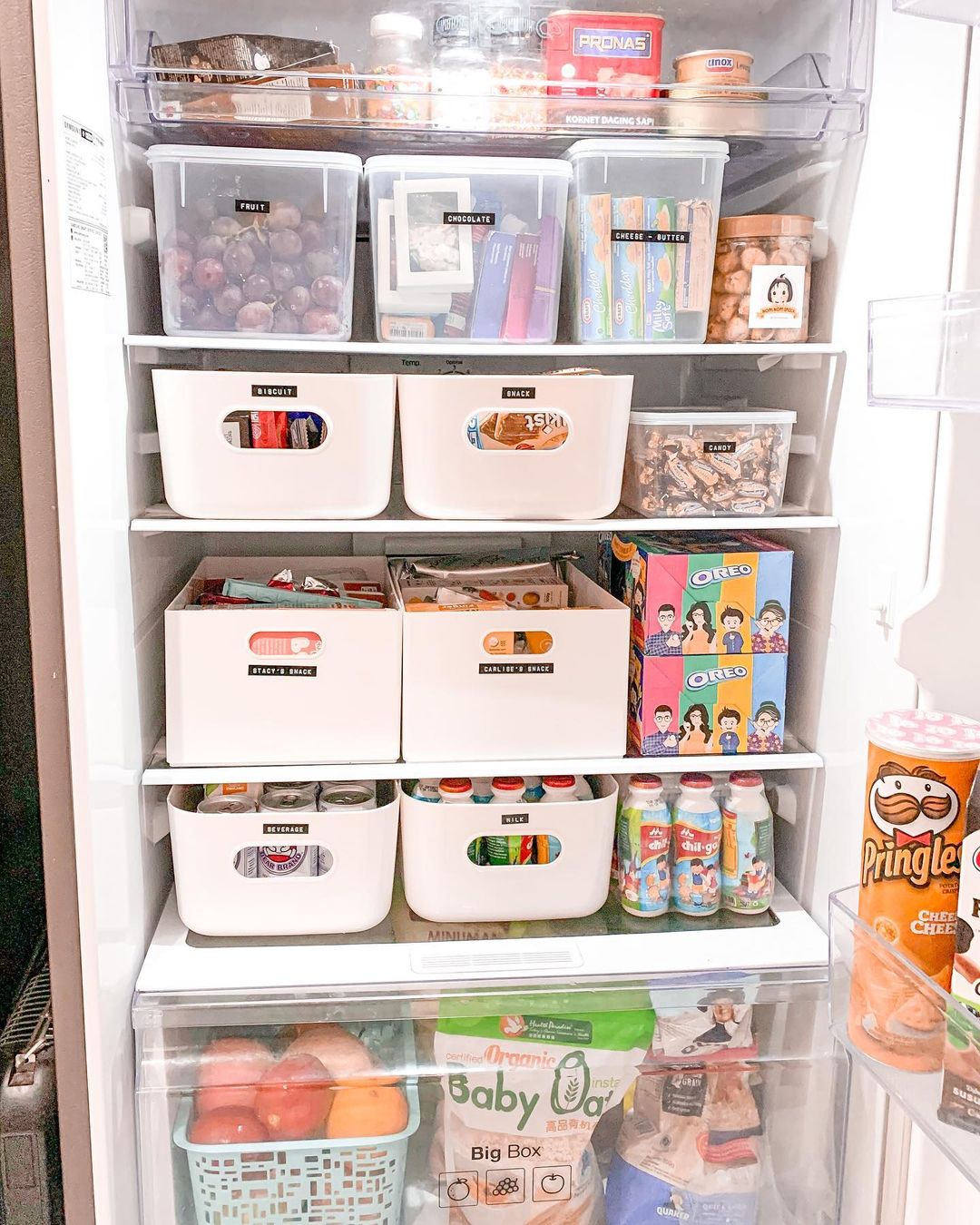 Image by nathasiamilka
Image by nathasiamilka
Emily Henderson advises: “Labels are one of my favorite organizing tricks. Label bins and containers so that everyone in the house knows where things belong. It helps keep the fridge in order long-term.” — Emily Henderson, Style by Emily Henderson Blog
Read – 40 Most Beautiful And Unique Pink kitchen Ideas
6. Rotate Groceries for Freshness
Use the “first in, first out” method to keep older food items at the front and newer items at the back. This simple practice helps avoid food waste and ensures you’re eating items before they expire.
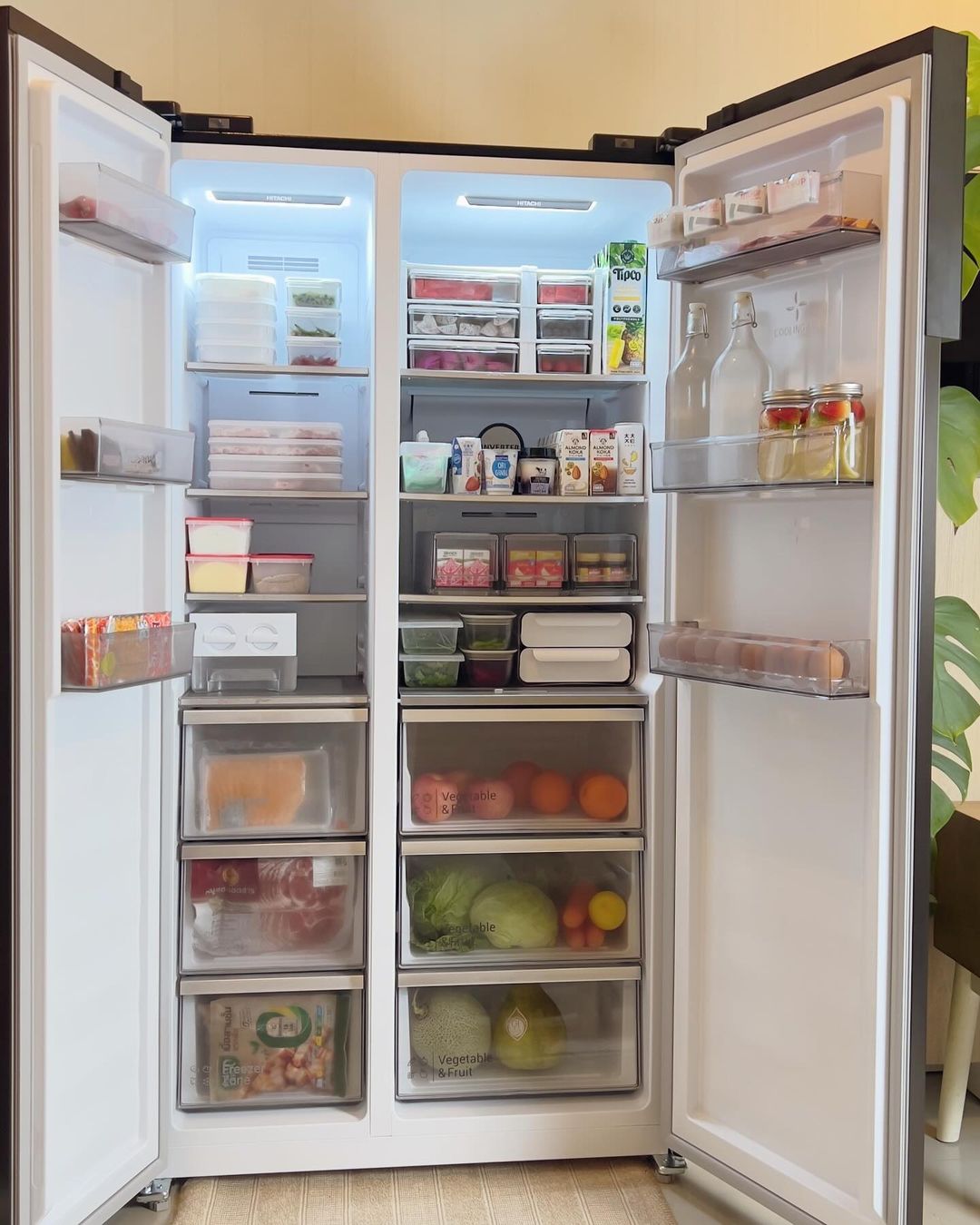 Image by kate.variety
Image by kate.variety
Justina Blakeney shares: “First in, first out. Make sure older items are at the front and new groceries go to the back. This simple step prevents food from going bad and keeps everything fresh.” — Justina Blakeney, The Jungalow Blog
7. Use Lazy Susans for Condiments
Install a Lazy Susan on fridge shelves to organize smaller items like condiments and jars. This rotating tray allows easy access to everything, especially items stored toward the back.
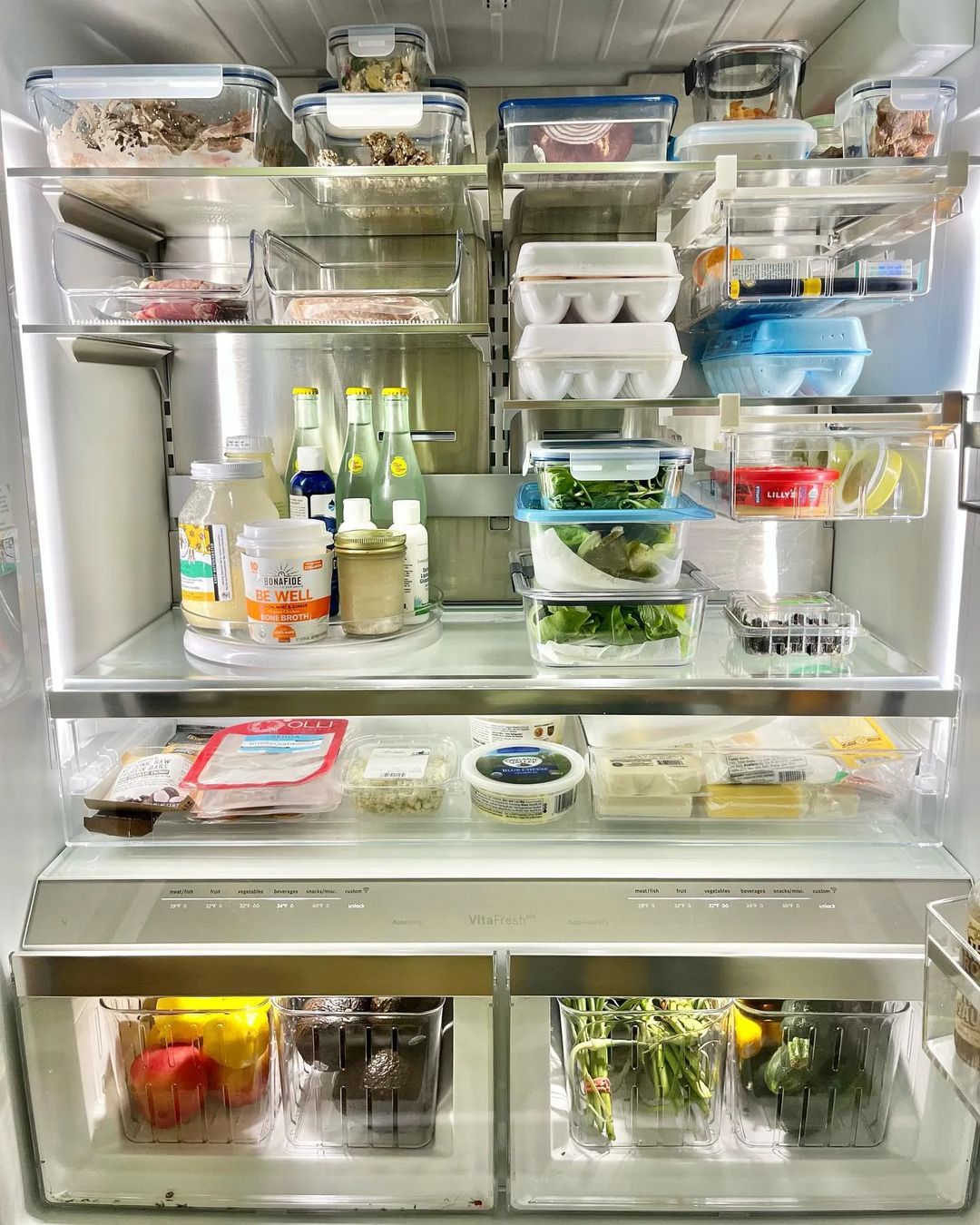 Image by mdesign
Image by mdesign
Genevieve Gorder suggests: “A Lazy Susan is perfect for organizing sauces and condiments in your fridge. It spins, so nothing gets forgotten at the back.” — Genevieve Gorder, Genevieve Gorder Blog
8. Utilize Drawer Dividers for Produce
Dividers in crisper drawers help you organize a refrigerator with fruits and vegetables separately, maintaining freshness by keeping items from being crushed or mixed. Proper airflow and humidity control also preserve their shelf life.
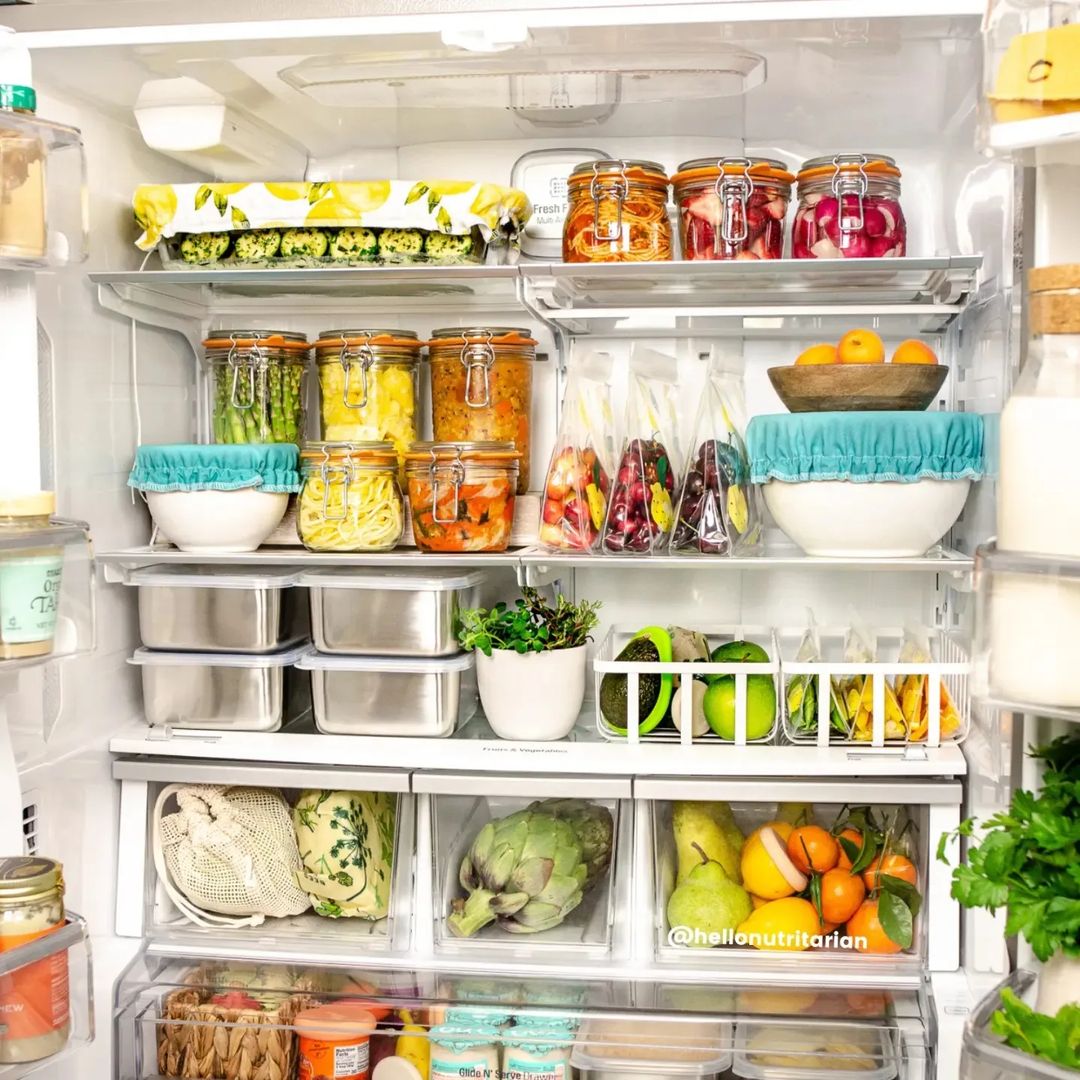 Image by bigfamilyliving
Image by bigfamilyliving
Cassandra LaValle suggests: “Using dividers in your crisper drawers is a simple way to keep fruits and veggies from mixing and bruising, while also allowing them to stay fresher for longer.” — Cassandra LaValle, Coco Kelley Blog
9. Use Glass Containers for Leftovers
Switch to glass or clear plastic organizer containers for leftovers. Not only are they more sustainable, but you can also easily see what’s inside, helping prevent food from being forgotten in the back of the fridge.
Orlando Soria shares: “I recommend using clear containers for storing leftovers. Not only do they look cleaner, but you can easily see what’s inside, which means fewer forgotten meals.” — Orlando Soria, Hommemaker Blog
10. Store Eggs in Trays for Space Saving
Invest in an egg tray to better organize and protect your eggs. It saves space and prevents eggs from rolling around. Trays also allow you to keep track of your egg supply more easily.
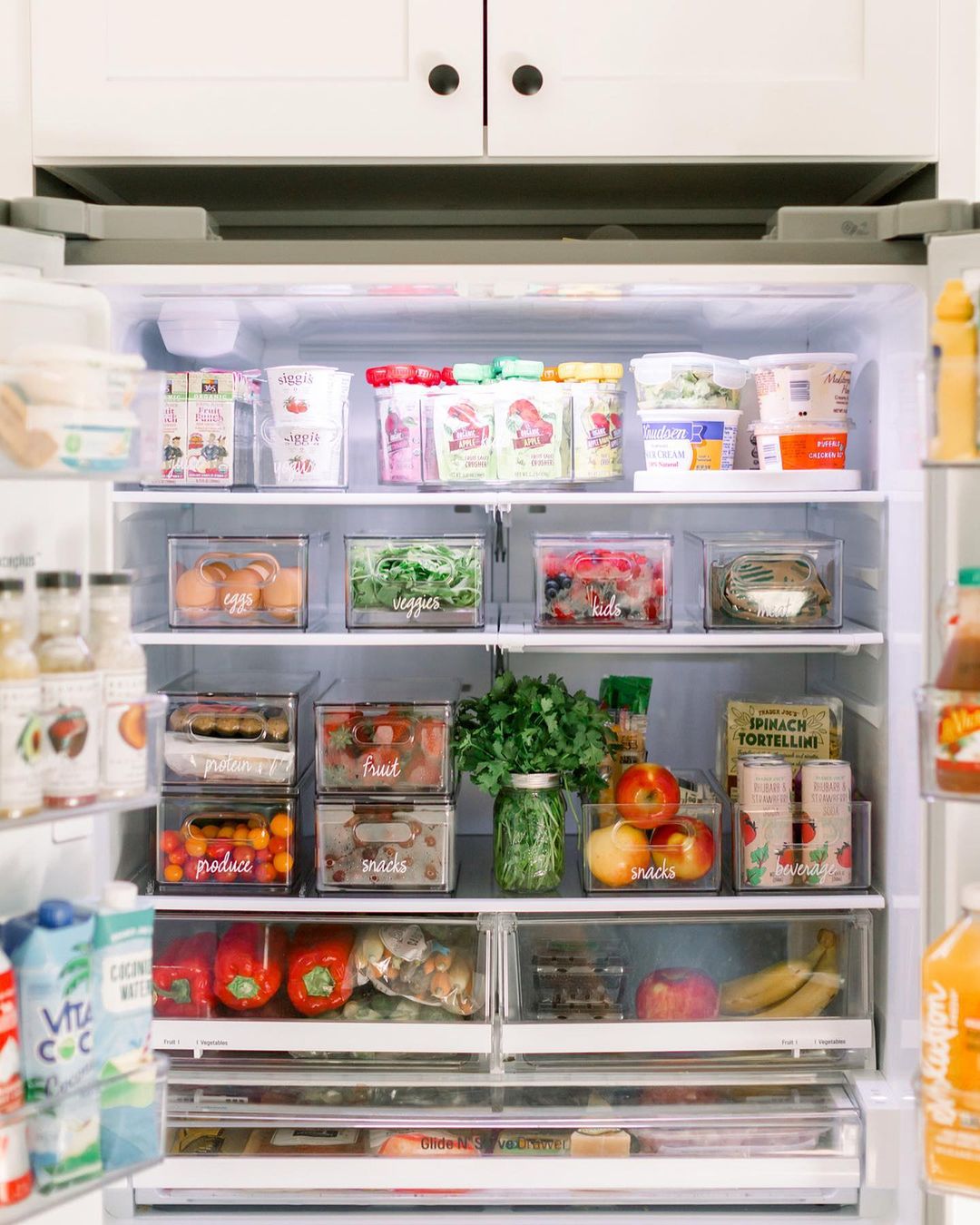 Image by heychantelljoy
Image by heychantelljoy
Victoria Smith advises: “Egg trays not only look chic, but they’re also a smart way to keep eggs organized and save shelf space.” — Victoria Smith, SF Girl by Bay Blog
Read – 20 Beautiful And Cozy Home Lounge Room Bar Ideas
11. Avoid Overpacking to Ensure Air Circulation
Leaving enough space between items allows cold air to circulate freely, keeping food evenly chilled and reducing the risk of spoilage. Overstuffing your fridge can lead to uneven cooling.
Cassandra LaValle explains: “Overloading your fridge can block airflow and lead to uneven cooling, which can make food spoil faster. Leave space between items so air can circulate.” — Cassandra LaValle, Coco Kelley Blog
12. Store Herbs in Jars of Water
Extend the life of fresh herbs by storing them upright in jars of water, similar to how you would store flowers. Cover them with a plastic bag to trap moisture and keep them fresh longer.
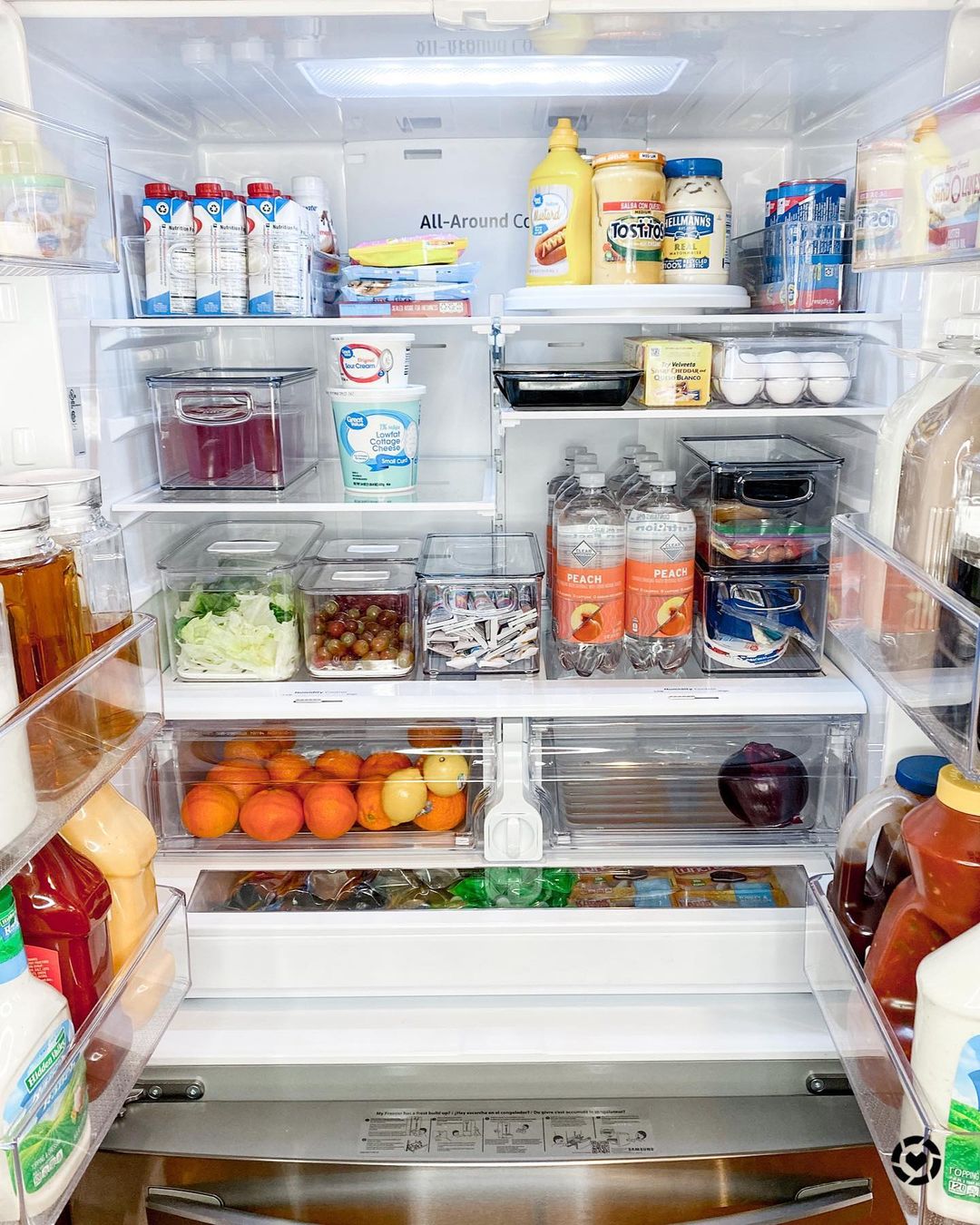 Image by mycozydiyhome
Image by mycozydiyhome
Kate Arends recommends: “I love to store herbs in small jars with water. Cover them with a plastic bag to keep them fresh for longer, and they fit perfectly on a shelf.” — Kate Arends, Wit & Delight Blog
13. Place Dairy in the Coldest Spots
Store milk and dairy products, such as yogurt and cheese, on the middle or back shelves where the temperature is coldest to keep them fresh for longer. Avoid placing them in the door where temperatures fluctuate.
Erin Gates advises: “The back of the fridge is the coldest spot, making it the best place to store perishable items like milk and dairy products.” — Erin Gates, Elements of Style Blog
14. Avoid Storing Milk in the Door
Because the fridge door is constantly exposed to room temperature when opened, avoid storing highly perishable items like milk there. Instead, store them on the lower, colder shelves.
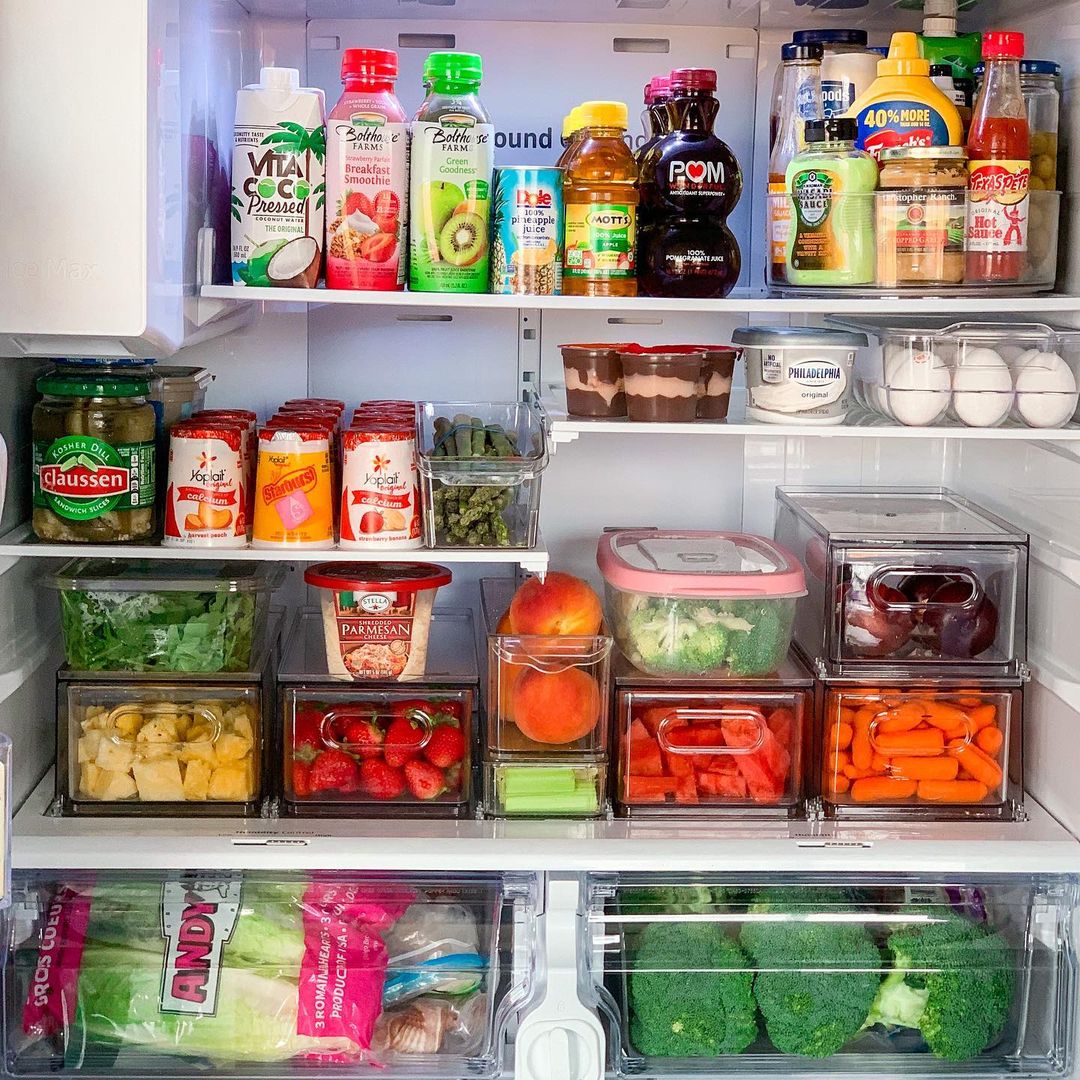 Image by stephanieprosa
Image by stephanieprosa
Sarah Gibson explains: “Milk should never go in the fridge door because it’s the warmest spot. Keep it on a lower shelf where it’s coldest.” — Sarah Gibson, Room for Tuesday Blog
15. Create a Snack Zone for Easy Access
Designate a specific shelf or bin for snacks that are easy to grab. This is especially useful if you have kids, as it gives them a dedicated space to find their favorite snacks.
Sherry Petersik suggests: “Create a dedicated snack zone in your fridge for easy access. This keeps snack items from mixing in with the rest of your groceries and makes them easy to grab.” — Sherry Petersik, Young House Love Blog
Read – 22 Beautiful Old Mexican House Interiors You Should See
16. Set Up an “Eat Me First” Bin
A designated “Eat Me First” bin for items that are nearing their expiration date can significantly reduce food waste. This encourages you to use those items before opening something new.
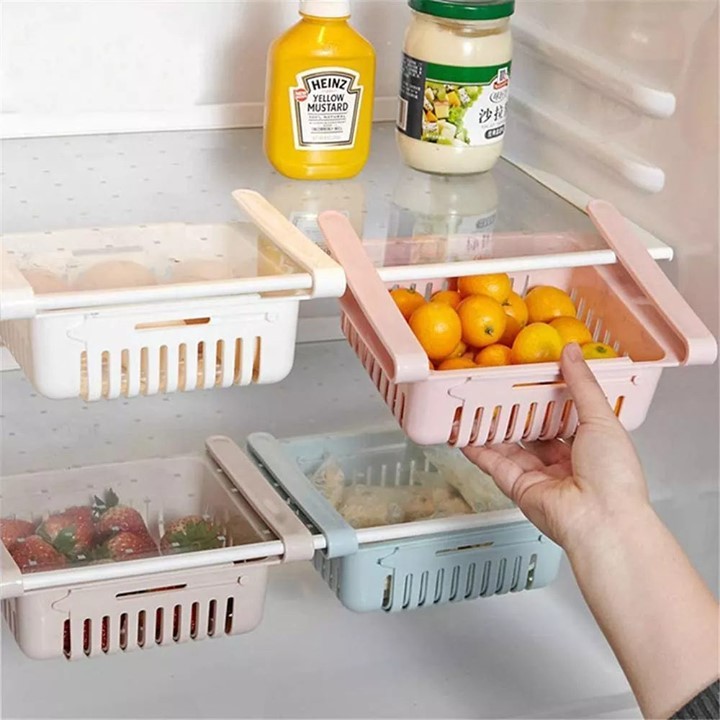 Image by hunkerhome
Image by hunkerhome
Leanne Ford advises: “I always recommend having an ‘Eat Me First’ bin. This way, you know what needs to be used up before it goes bad, reducing food waste.” — Leanne Ford, Leanne Ford Blog
17. Store Raw Meat on the Bottom Shelf
Keep raw meat, poultry, and fish on the bottom shelf in a designated area to prevent any juices from dripping onto other prepared foods. Using a tray under the meat is a good safety measure for avoiding contamination.
Jessica Helgerson emphasizes: “Raw meats should always be stored on the bottom shelf or in a designated drawer to prevent any drips from contaminating other foods.” — Jessica Helgerson, Jessica Helgerson Blog
18. Keep Condiments in the Door
The fridge door is ideal for condiments and sauces that don’t need to be kept at a very cold temperature. Storing them in the door also frees up shelf space for more perishable items.
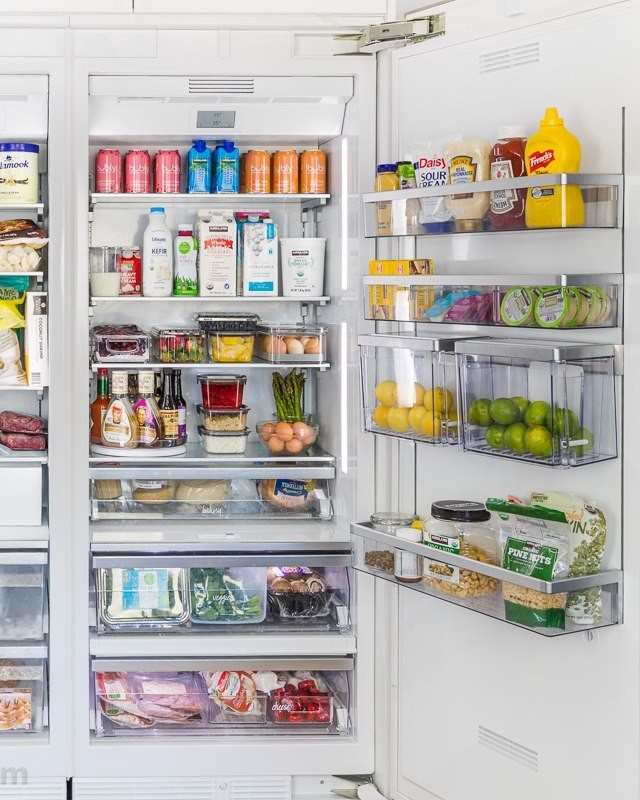
Image by natashaskitchen
Nicole Gibbons adds: “The door is perfect for condiments, which don’t need to be kept as cold as dairy or meats. Plus, it frees up shelf space for bigger items.” — Nicole Gibbons, Clare Blog
19. Maximize Vertical Space with Stackable Bins
Stackable bins or shelves help you make the most of vertical space in your fridge. They’re great for grouping similar items together while preventing smaller items from getting lost.
Jenny Komenda recommends: “Using stackable bins or shelves in your fridge helps maximize vertical space and keeps everything organized. It’s one of the easiest ways to make the most of a small fridge.” — Jenny Komenda, Juniper Home Blog
20. Check and Maintain Temperature Settings
Keep your fridge temperature at an optimal 37°F (3°C). This setting is cold enough to keep food fresh but warm enough to prevent items from freezing. Regularly checking the temperature ensures food safety.
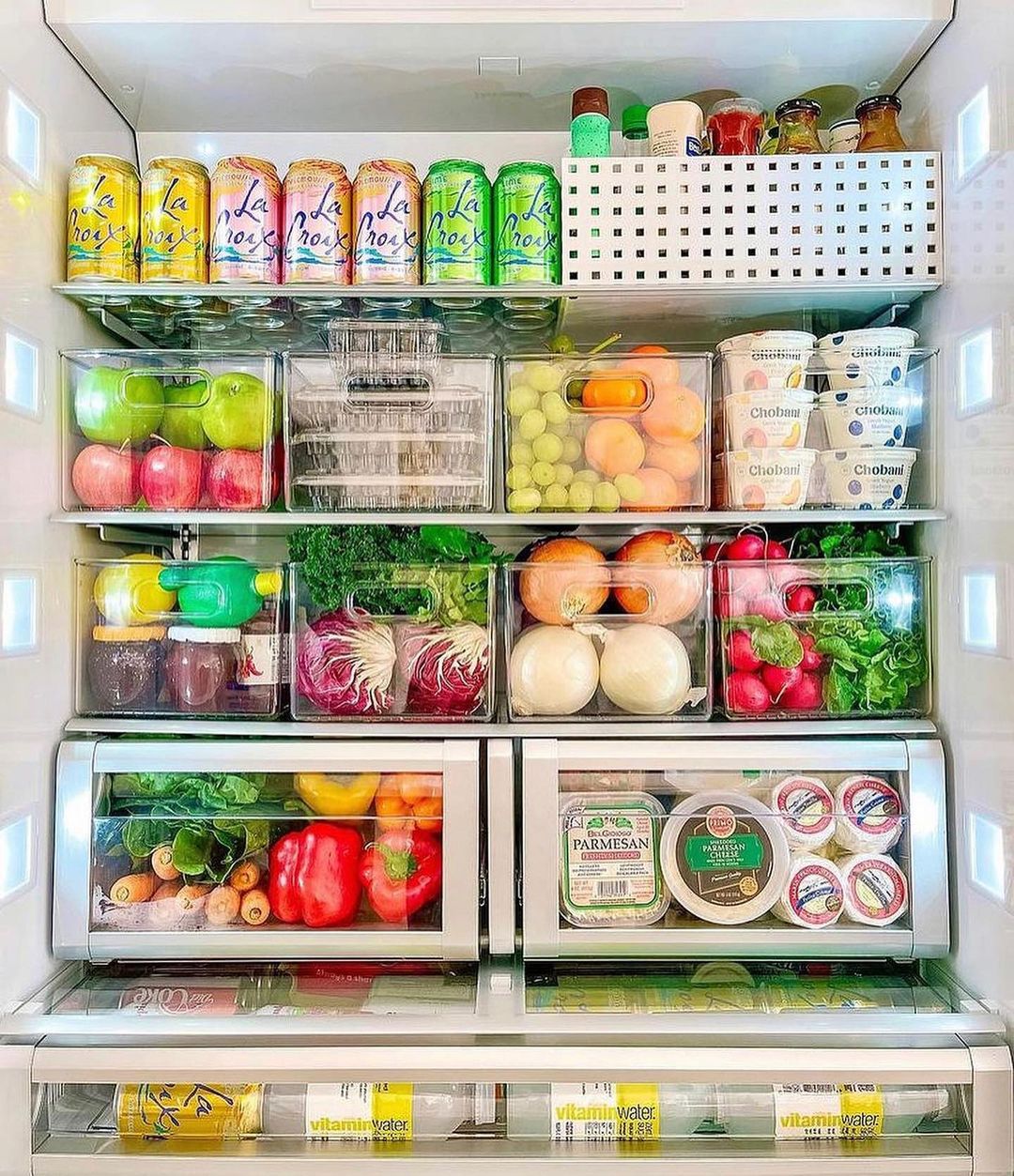 Image by the_welcoming_home
Image by the_welcoming_home
Emily Murray advises: “Make sure your fridge is set to the optimal temperature, around 37°F. This keeps your food fresh without risking freezer burn on items that shouldn’t be frozen.” — Emily Murray, The Pink House Blog
Read – 40 Functional Kitchen Peninsula Attached To Wall Ideas
These informative tips, paired with expert insights, will help you maintain a functional and efficient fridge, while also reducing food waste and keeping your items fresh longer.
